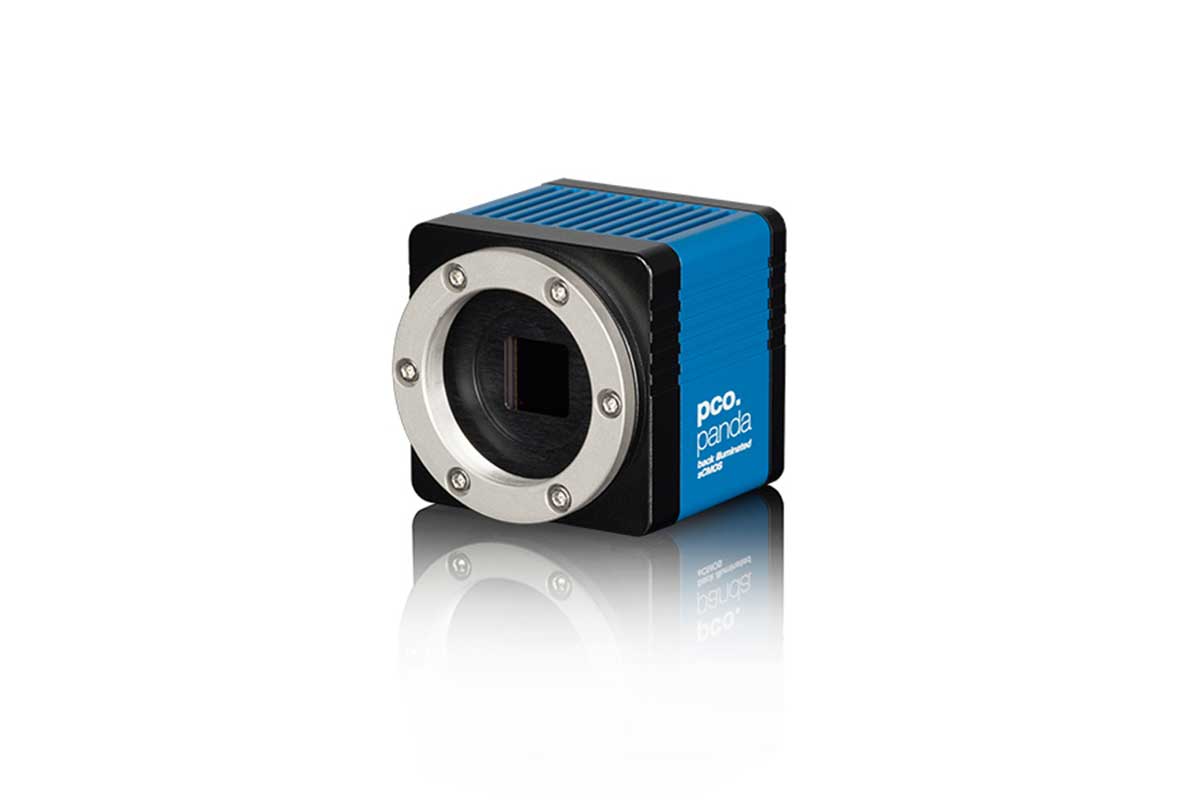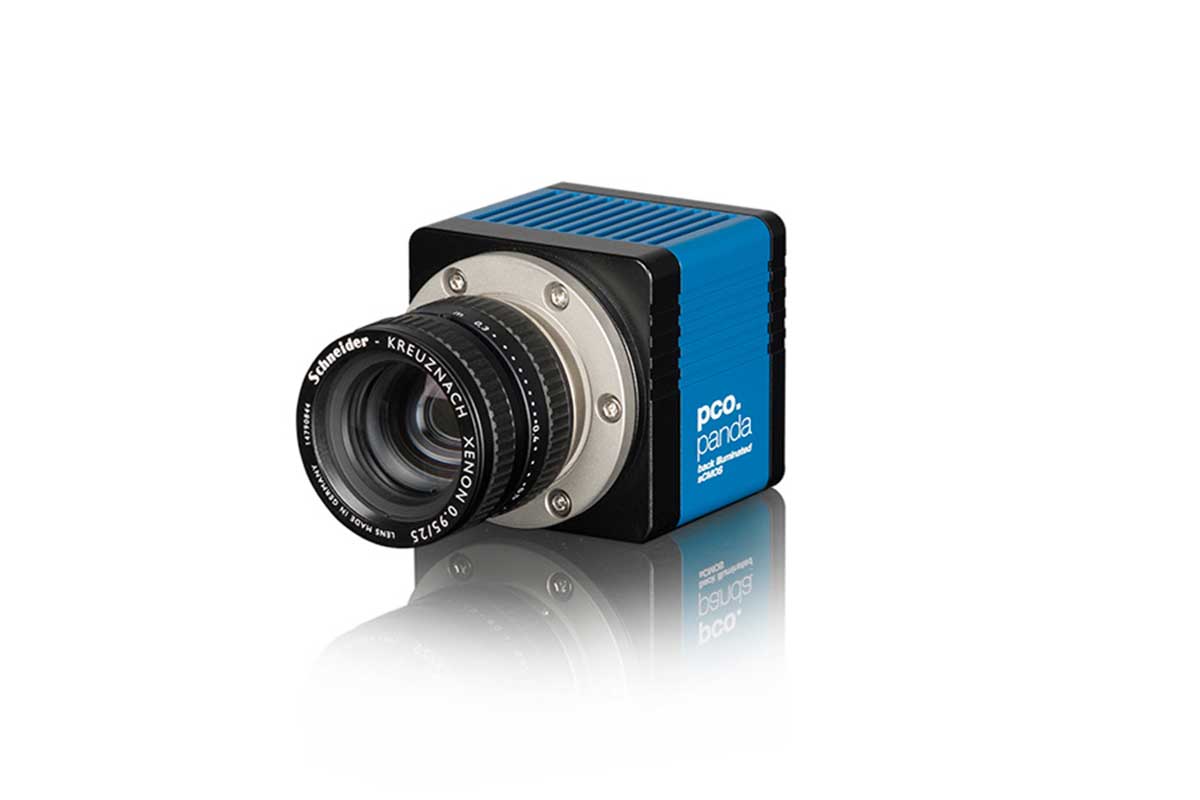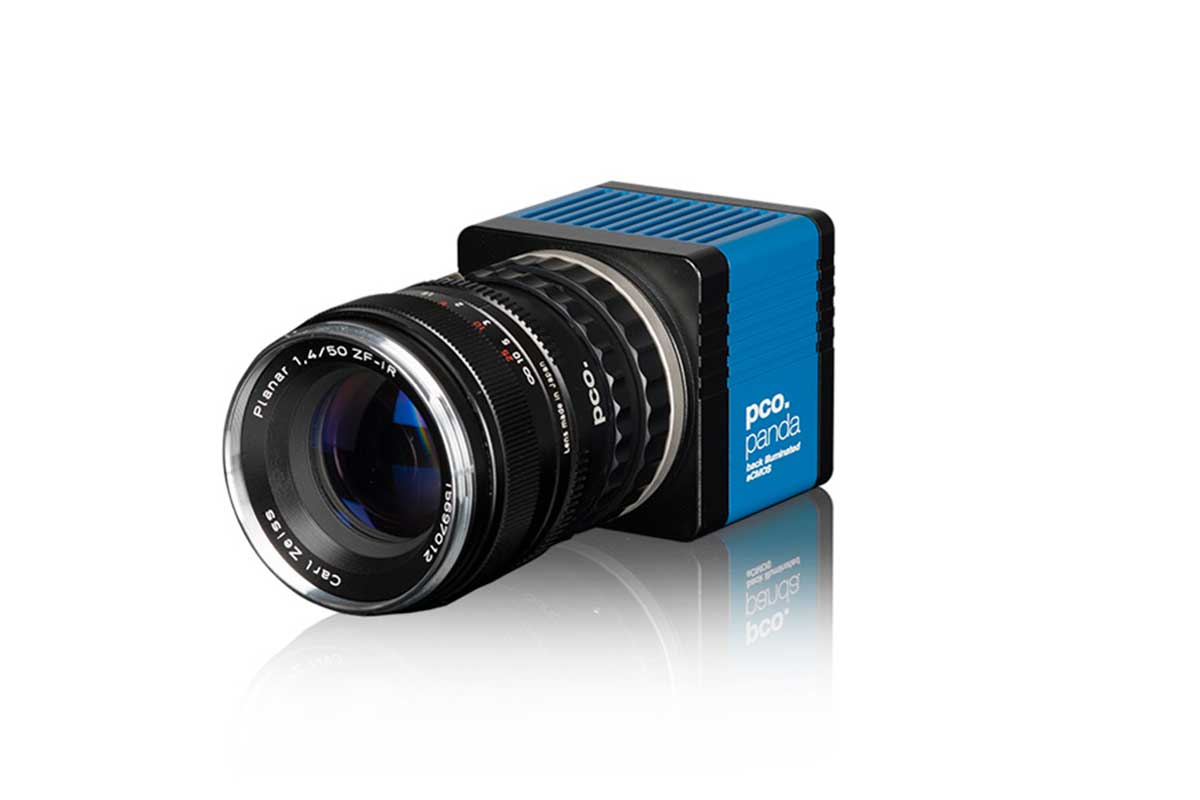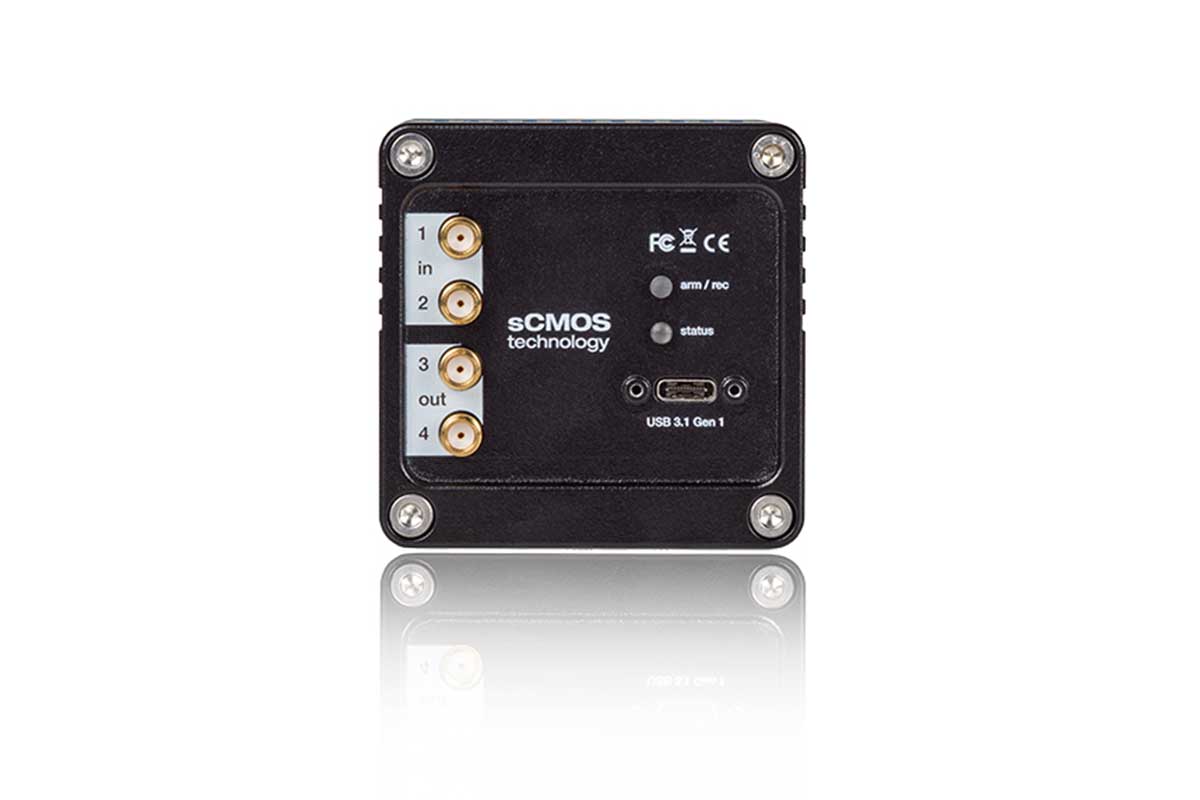The new back illuminated (bi) 4MPix sCMOS sensor provides a quantum efficiency of up to 95% which provides a significant benefit when every single photon counts. The bi-uv option is a good match for applications that require sensitivity in the UV spectral region, down to a wavelength of 190nm. The 4MPix sCMOS imager has 6.5μm x 6.5μm pixels which produce images with high dynamic range and high SNR. This camera is ideal for low-light imaging in which short exposures are needed. For exposures longer than about 1sec, we recommend the pco.edge 4.2 bi, which uses the same image sensor in TE-cooled configuration.
This camera series supports an HDR mode for wide dynamic range imaging as well as a low light mode which reduces the temporal read-noise by a process of correlated multi sampling (CMS).
The sCMOS image sensor used in this camera has two readout and Analog-to-Digital (A/D) conversion datapaths, shown below as “Top” and “Bottom” readout chains. These pixel values in the two datapaths result from the same exposure.
In the High Dynamic Range (HDR) mode, different analog gains are applied to the Top and Bottom readout chains: the low gain image is optimized for high full well capacity, and the high gain image is optimized for low read noise. The animation below shows the typical HDR mode of operation in which the low-gain and high-gain datapaths are combined. Data from the dimmest content as well as the brightest content are blended in a way to achieve an image with a high intra-scene dynamic Range.
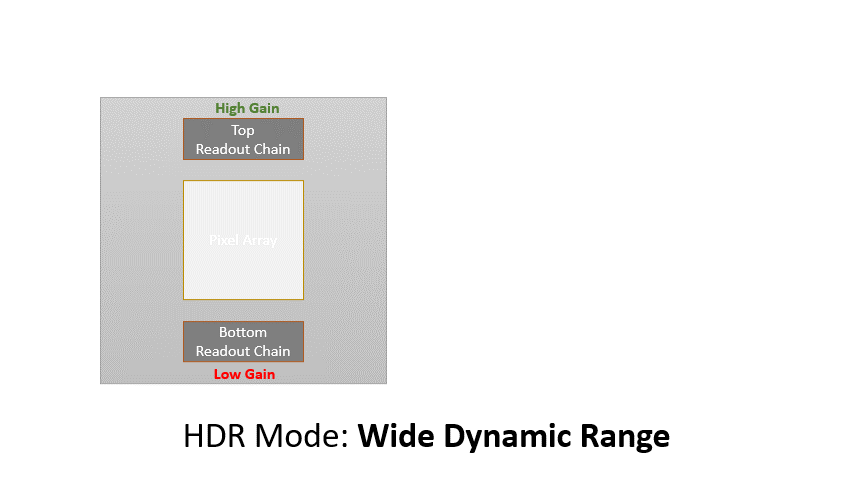
In the low light mode, the top and bottom datapaths are both set to high gain, which means that both A/D converters on the image sensor digitize low intensity pixel values, optimized for low read noise. The signal within each pixel is simultaneously digitized by the two A/D converters and added – a technique that is referred to as correlated multi sampling (CMS). This causes a reduction of the read noise, the trade-off being that the usable intra-scene dynamic range of the sensor is reduced in comparison with that achievable in the HDR mode. This is usually not a concern under low light conditions. Note: sampling theory estimates a noise reduction by a Sqrt(2) factor, see datasheet (see page 2).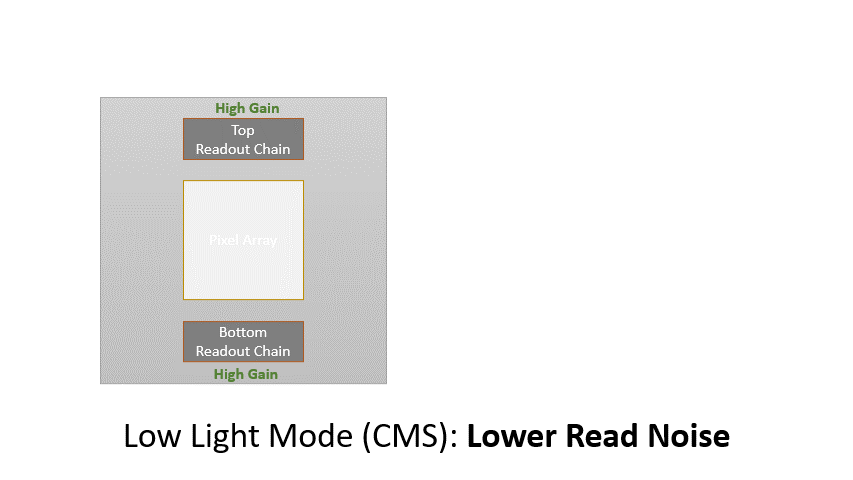
This camera series also supports a lightsheet scanning mode which leverages the rolling shutter readout of the sCMOS imager, in which the readout direction of the sensor is from top to bottom. The standard line time value is 12 μs and it can be set from this camera specific line time up to 2 ms. Compared to the standard operation mode, the lightsheet scanning mode enables the selection of the parameters “Line Time” and “Exposure Lines”. This guarantees an optimized synchronization to an existing lightsheet microscope setup which has no selectable speed or timing. It is possible to set a delay prior to the exposure start.
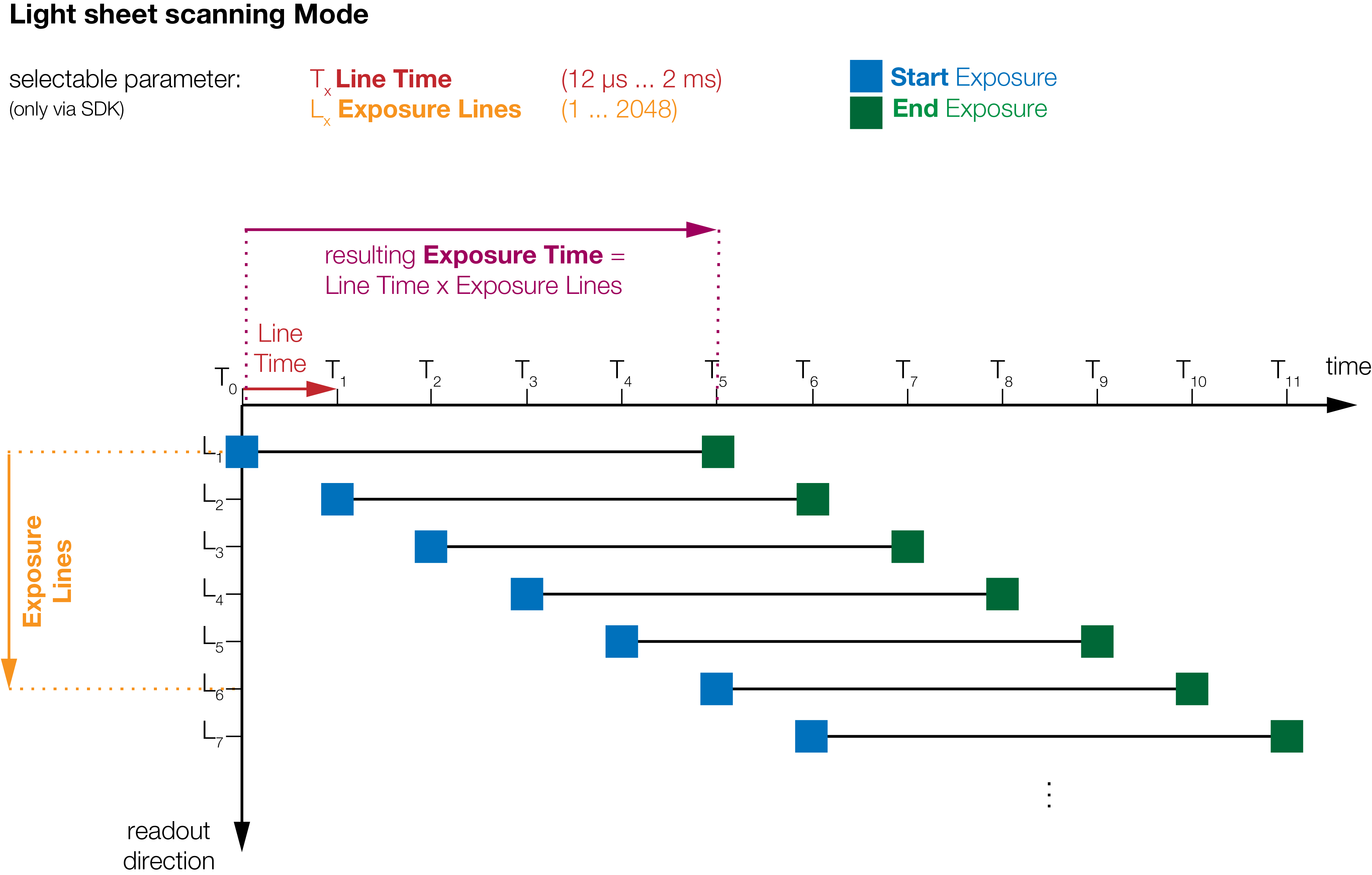
Host Interface: USB 3.1
Spectral Options:
- Monochrome
- UV

